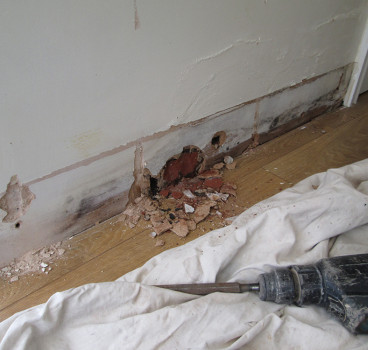Seven years since the discovery of self-healing concrete - what’s the delay?
Self-healing concrete using bacteria to seal cracks has been talked about for more than six years. It's a remarkable innovation which means that concrete could in theory last for ever.
So why have we heard so little about it and why are we not using it on all of our buildings and infrastructure? It possibly has everything to do with price – it is estimated that production costs for conventional concrete amount to £80 per cubic metre, compared to a cubic metre of self-healing concrete which would cost between £85 and £100 with the bacteria added.
However, with significantly lower repair and replacement costs over the lifetime of a building, this minimally higher investment would quickly pay for itself. It is estimated that around £40 billion a year is spent in the UK on the repair and maintenance of structures, the majority of which are made from concrete.
So how does Self-healing concrete work? To quote its inventorDr Henk Jonkers, it is a product that will biologically produce limestone to heal cracks that appear on the surface of concrete structures. Specially selected types of the bacteria genus Bacillus, along with a calcium-based nutrient known as calcium lactate, and nitrogen and phosphorus, are added to the ingredients of the concrete when it is being mixed. These self-healing agents can lie dormant within the concrete for up to 200 years.
However, when a concrete structure is damaged and water starts to seep through the cracks, the spores of the bacteria germinate on contact with the moisture and nutrients. Having been activated, the bacteria start to feed on the calcium lactate.
As the bacteria feed, oxygen is consumed and the soluble calcium lactate is converted to insoluble limestone. The limestone solidifies on the cracked surface, thereby sealing it up. It mimics the process by which bone fractures in the human body are naturally healed.
The consumption of oxygen during the bacterial conversion of calcium lactate to limestone has an additional advantage. Oxygen is an essential element in the process of corrosion of steel and when the bacterial activity has consumed it all, it increases the durability of steel reinforced concrete constructions.
The key ingredients in the process are two self-healing agents, the bacterial spores and calcium lactate-based nutrients, which are introduced to the concrete within separate expanded clay pellets 2-4 mm wide. These ensure that the agents will not be activated during the cement-mixing process. Only when cracks open up the pellets and incoming water brings the calcium lactate into contact with the bacteria do these become activated.
In 2015 academics in South Wales in partnership with Costain started testing the concept but little has been heard since. While these things take time to verify it does seem we are missing a major opportunity with the possibility of self-healing bridges, walls, roads and even pot holes in the future – significantly reducing costs.
Can't help thinking how exciting this is – so what's the delay?
By John Ridgeway
Follow me on Twitter @JohnRidgeway99
Additional Blogs

How construction can cut Its carbon footprint by caring for soil
Soil is often dismissed as mere dirt, but it is one of the planet’s most powerful carbon stores, holding more than all of the world’s forests combined. Yet in our rush to build, pave and develop, we...
Read moreWhat is bridging damp? How it happens and how to fix it
Bridging damp happens when moisture finds a path around the building’s damp-proof course (DPC) so it reaches your internal walls and skirting. If you see damp patches rising above the skirting or...
Read more

The silent death of the fixed-price contract
For decades, the fixed-price contract has been the backbone of construction procurement. It promised certainty with a defined scope, an agreed sum and a clear transfer of risk from client to...
Read more